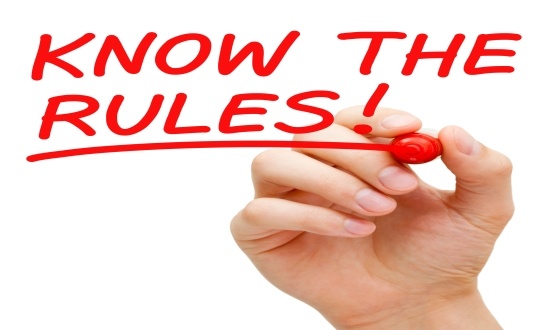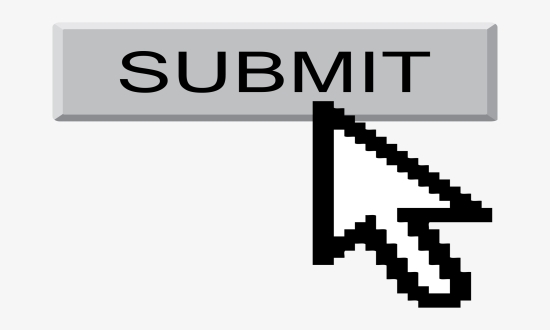
[quote]A press release?is a written or recorded communication directed at members of the news media for the purpose of announcing something ostensibly newsworthy. Typically, they are mailed, faxed, or e-mailed to assignment editors and journalists at newspapers, magazines, radio stations, online media, television stations or television networks.[/quote] Via Wikipedia
Knowing how to write a press release is a skill that will change your life. It’s an easy way for your efforts, no matter what they might be, to get some free coverage.
Any media organization can receive a press release, but that doesn’t mean they’ll actually print anything out of it. Your job is to write a killer release with information the media outlet can use to increase their own sales.
That is perhaps the biggest misconception that people have when writing a press release. Just because you submit something to a media outlet or a website doesn’t mean they need to print it.
They could just delete your email or throw away your paperwork. That’s why it is so important to get the basics down in writing a PR before trying to send one off.
[box type=”note” style=”rounded”]If you want to find out what is one of the best Press Release Distribution Services,
Click Here and learn more. They will even create a PR for you![/box]
The Basics of Writing a Press Release?
The first rule of writing a press release is to make it structurally and grammatically perfect.
Media outlets require a certain format for printing. If your PR doesn’t match up to their formatting, then you’ll likely be rejected.
Thankfully you don’t have to format a press release in hundreds of different ways for it to be generally effective. Here is the standard format for a press release that you should follow.
DATE
RELEASE TIME
TITLE
LOCATION?
BODY OF TEXT
ABOUT US/BIO
CONTACT INFORMATION
The date is the day that you’re submitting the press release. It isn’t the day that you composed it.
The date is also not the day that you want to have the press release printed. That’s the next line.
Many press releases tend to say ?FOR IMMEDIATE RELEASE,? but it doesn’t have to be that way.
If you give a media outlet a couple weeks to plan on printing your information, you may actually have a better shot of getting some coverage.
The location is not your business location. It is the location where the information you’re going to be talking about is taking place.
If your business is based in Seattle and you’re hosting an event in New York City, then your location should be NYC on the press release.
 If you have any of this structure incorrect, then there is a good chance your press release is going to hit the trash bin.
If you have any of this structure incorrect, then there is a good chance your press release is going to hit the trash bin.
Looking for a properly formatted header is the first step in the screening process of many reviewers. Make sure everything is aligned to the left for most language.
Within the body of the text, you need to pretend that you’re a journalist asking yourself questions. You’ve got to be able to answer the 6 W’s: who, what, where, when, why, and how. [Yes – ?how? doesn’t start with a W, but it does have one in it.]
This should be all of the details anyone would need to know to take advantage of what you’re doing.
The biography section is a small paragraph that discusses the history of you or your company. Discuss your successes or awards and what your market position happens to be.
This should be complimentary information to what has been shared within the body of the text.
The final section, the contact details, should be information that anyone can use to reach you if they have questions or comments about your press release.
It should also be information you would want to have printed so that your potential customers can reach out to you.
The 6 Rules of Writing a Press Release?

Let’s address the biggest problem that is faced when composing a press release.
The average PR isn’t interesting. It doesn’t convey anything that is remotely important.
Many writers, in fact, construct their press releases in such a way that they attempt to make something that isn’t important seem like it is so that they can get some free press.
Reporters and editors work with words every day. They know this trick because they use it themselves.
If your PR isn’t about something that is interesting and important, it won’t get printed. It’s that simple.
There’s a second danger in using the language of marketing within a press release: it makes everyone else think you’re incompetent.
Instead of writing a bunch of words that ultimately leaves a ?blah blah blah? impression, follow these 6 rules of writing a press release so you can create something that will leave a better overall impression.
Rule #1: Write it as the media outlet would
A press release needs to be structured in such a way that it can be immediately printed. This means it should be professionally edited and be linguistically perfect.
Use quotations from people within the organization to enhance the information being used in the content.
?
Rule #2: Don’t be superior
A press release isn’t about your ego. Knowing how to write a press release means you are making sure there is information in the PR that can be helpful to others.
If your wording seems superior and egotistical, even if you do get printed, you’ll wish you hadn’t been.
?
Rule #3: Sell baby sell
Your PR is a sales tool. You need to identify a problem, show how you can fix that problem, and present the reader with a value proposition. How can you make sure your content has value?
Emphasize a level of credibility through a presentation of your niche expertise. If a reporter or editor finds you interesting, there’s a better chance you’ll be printed.
?
Rule #4: Not every quote has to be internal
Quotes from internal sources are great, but external quotes about your event are even better.
Not only does this give other businesses a chance to get some exposure, but it also further emphasizes a higher level of expertise for you.
?
Rule #5: Eliminate the form letter
Don’t just mass email, snail mail, or fax your press releases out to every media outlet you can locate.
Make sure you make personal contacts with local outlets. Step in to deliver your press release in person. Send along a token of your gratitude.
?
Rule #6: Tell your story
People are interested in stories. They aren’t interested in 500 words of free publicity.
If it sounds like an advertisement, then it will be treated as such.
Stories engage readers and make them want more. Advertisements are just background white noise these days.
?
How You Generate Excitement Matters?
Adjectives. These are going to be your best friends and your worst enemies.
Great adjectives can generate excitement for what you’re offering. Poor adjectives will make readers shake their head in disbelief and begin to skim the rest of your PR.
Here are some ideas that do work and others that tend to fall flat.
The problem of passion. Have you ever listened to Gordon Ramsay discuss food on TV?
He uses plenty of adjectives to describe food. You’ll hear words like fantastic, incredible, stunning, and amazing heard in almost every sentence. It gets people excited about food because they can hear and feel the passion he has in those words.?
If you want to know how to write a press release, then your words must be able to do the same.
If you’re talking about your new ?legendary products? or your ?magical devices,? your press release is going to fall flat.
These adjectives don’t communicate passion. People don’t care if you see yourself as ?redefining the future? in your market share. They just want to know if you’re passionate about your product.?
Why? If you’re not passionate about what you’re promoting, then why should they be?
?
The problem of innovation. Most writers will solve the first problem right away, but this problem tends to catch everyone from time to time.
For something to be interesting, the reader must find it to be innovative. People like to support winners. They want to know how your stuff will make you stand out from the rest of the crowd.?
If your PR is talking about the fact that you’ve just added a new brand to your product line, it’s difficult to show that this is innovative.
This is you saying that you’ve got more stuff to sell, so come and spend your money at my business.?
If you can’t find a way to be innovative, then don’t waste your time writing a press release.
?
The problem of facts. Excitement ultimately gets generated by the facts that are presented.
Your value proposition from your adjectives must be fulfilled. If people order a dish from Ramsay and it isn’t fantastic, incredible, stunning, or amazing, then he’s lost a customer.
If you can?t fulfill your value, then you won’t get your PR printed.
?
How Often Should You Release a PR??

There is no set timing. If you have something important to announce and there is value to what you’re writing about, then compose a press release and send it out.
Keep the other rules in mind, however, when you’re doing this. If you just ordered a pizza for lunch, does that deserve a press release? Of course not.
Yet that’s how many organizations approach this marketing tool. Any sort of detail that might be interesting has a press release created for it and that ultimately dilutes the company’s niche authority and expertise.
Let’s take a look at some examples and whether or not a press release is a good idea.
#1. The release of a new product
?This is a definite ?yes.? New products increase a value proposition. As long as this new product has a story to tell and it can solve some sort of problem, your press release should get some play.
?
#2. The release of new information
This is a definite ?no.? You see this a lot with online press releases.
An entrepreneur or freelancer creates a marketing e-book that they’re trying to give away and they create a press release announcing this fact.
On the surface, a free e-book seems like a great value, right? The problem here is that you’re using one marketing tool to bring attention to another marketing tool.
You’ve just added another step to the selling process.
?
#3. A great award or accomplishment
This is a ?sometimes.? If your award or accomplishment benefits your community or your target demographics, then absolutely craft a PR for it.
If the award is something that only a few people would ever know the meaning of if they saw its name, then don’t bother.
There’s a big difference between winning a Nobel or Pulitzer and winning the Honor Carrier Award from the Wisconsin State Journal.
?
Statistics in a Press Release: Do or Do Not??
When you’re telling a story, then you need facts to support that story.
In an age when everything can be researched on the internet in seconds to determine if it is factual or not, having statistics from proven sources is a great way to present your value argument.
Many will say that you should include the source to these statistics in a hyperlink, but remember this: you can’t control where the PR gets printed.
What happens if you include hyperlink text and a media outlet wants to print your PR in the newspaper or within a magazine?
Suddenly that hyperlink has zero value AND your press release suddenly offers no method of verification should it be printed.
That’s why you should write out the information completely.
Instead of saying ?55% of people who see statistics on the internet believe they’ve been made up,? include your source material within the body text of your press release.
?According to Pew Research, 55% of people who see statistics on the internet believe they’ve been made up.?
This gives you two advantages: 1) you always have your source material published and this gives you credibility; and 2) you can still include a hyperlink to the source material if you’re submitting the PR to an online publisher.
Is There a Secret to Creating a Great PR Title??

This is often the first question that is asked.
In reality, this should be the last question that gets asked. You can have a fairly lousy title and most editors aren’t going to care.
They’re going to create their own title more often than not because they only have a certain amount of space they can dedicate to your piece.
That doesn’t mean you can ignore the title. It’s still very important. It just needs to be reflective of the information that is being offered.
Unlike internet articles, a press release can have a long title. Here’s just one recent example from a press release.
New Stackable Suitcase Storage Bins Go On Sale in the United States on Amazon; Is There Hope For People Who Are Tired of a Messy Suitcase At the Hotel??
You could never get away with a title like this on a blog. Many online PR sites would probably laugh at you as they reject your PR.
Yet the top companies in the world today are structuring their PR titles just like this. If you look at past press releases from Apple, Microsoft, and Google, they all have this type of structure.
Why are the titles so long? Because it gives editors information they can use to draft their own title. Here are some of my options as an editor to shorten that down, but still have my title convey the same message.
Stackable Storage Bins Available on Amazon for Cleaner Travel
Travel Headaches Disappear With New Amazon Item
Amazon Storage Bins Make Life Easier?
If you shorten your title down or use clickbait titles like you would for an online post, then you’re limiting the ability of an editor to shorten your press release to meet their needs.
If an editor can’t make something fit, then they’re not going to use it. That’s why longer is better.
Please Note. Some media outlets have specific rules that must be followed when composing titles, source information, and other specific features of a press release.
Don’t ignore these rules because your piece won’t get printed if you do ? even if those rules go against the best practices which have been developed for drafting a press release.
?
The About Us Biography Page: Don’t Lose Your Customer Now?
To be fair, the average person is just going to skim over the about us biography component of a press release.
Some media outlets won’t even print this component of the PR.
That doesn’t mean it should be ignored or set apart from the rest of your story. It needs to be your anchor.
Your biography is your final place to show off your niche expertise. It’s your credentials.
This part of the PR tends to be way too long, however, because marketers and writers have realized this can be used as their call to action.
They’ll write 200 words about their biography when the overall body of the PR was just 150 words.
Think about this section like this: if you had to sum up your company or what you do in 2 or 3 sentences, then what would you say? That’s what you should write.
Once you hit a 6 line paragraph, the reader’s eyes begin to glaze over and any expertise you may have established will have disappeared.
Your contact details should be specific
?If you have a website, then list it. Use an email address that you have setup specifically for PR responses.
A phone number that won’t just reach a messaging service is a good thing. Even though snail mail isn’t used often, consider adding this to your press release as well… unless you are working from home, in which case you could use a PO Box or similar option.
Is There Anything Else To Include??
A press release has a better chance of being published if there are additional helpful materials included with the package.
If you’re selling a product, for example, then include pictures of that product or even a sample so the media outlet can use it for themselves.
If you’re a musician promoting an album, then send a CD. Authors ? send your book. You get the idea.
A press release should be something that is inviting, informative, and tells your story.
If you can do that consistently, then you’ll know how to write a press release that is persuasive and gives you plenty of free coverage.
There are a few things you should remember about when you’re submitting a press release to online distribution sites.
People usually submit a PR to press release distribution services for two reasons: traffic and rankings. By publishing a press release, the goal is to drive more traffic to their websites. As a result,? more products sell or more subscribers come along.
They also want the pages on their sites to rank higher in Google. If your pages are on the first page of a search engine result, it’s more likely that people will find them and visit them.
These are the two main reasons why people publish press releases online.
If this is your intention, there are a few things to remember when submitting your press releases to different syndication platforms online.
First of all, you should be using the right?keywords in your headlines… but remember that these keywords cannot be too competitive. Otherwise your press release will get buried somewhere deep in the results and never be found.
Press releases tend to rank really well because they?re usually published on high authority websites. It?s not uncommon for a PR to rank on the first page of Google within a few minutes after publishing it.
To do this, however you must use low to medium competition keywords. This will give you many more chances to get your PR to the first page of Google within minutes.
The best keywords are the ones that people search very often and at the same time not many people are targeting them. It may not be easy to find such keywords, but if you dig deep enough you will find them.
To find the right keywords, you can use a free tool such as Google Keyword Planner or Jaaxy, which I happen to use quite frequently and highly recommend.
For your next PR, I would select a keyword that has at least a few hundred searches per month and less than 100 websites are trying to rank for it.
To check how many websites are ranking for the given keyword, just type into the Google search box the keyword in quotes and hit enter, e.g. “how to promote your business online.?

Then just go to the last page to see how many websites try to rank for this keyword.


You’ll want to use the keyword as close to the beginning of your PR title as possible. Other places where you should use a keyword in your press release are the first paragraph of your PR and the last paragraph.
Of course you shouldn’t overuse your keywords in a PR. The press release is not a lengthy document, so if you mention your keyword 2-3 times that will be more than enough, even if you are concerned about keyword density.
The same applies to anchor text backlinks. 2-3 backlinks per PR is enough.
If your press release looks spammy, this reduces the chances of it being published. If it is published, then the chances of it reaching the top of your keyword search results is greatly reduced.
Publishing Press Releases is Great for SEO

You will get hundreds of backlinks to your site from reputable sources. Although most of these links are no-follow, it is still beneficial. Google likes balance, so a mix of do-follow links and no-follow links makes your link profile look natural.
Another important thing you must remember about creating a press release is that you should write it in the third person. If you create a press release in the first or second person it will be rejected ? even if it is only one sentence that contains this alternative voice.
The only exception to this rule is that you can use the first or second person when you?re quoting someone.
Before you submit your PR to any syndication platform make sure that:
- The headline and the whole PR is newsworthy
A few more words about headlines:
A good title may not be important when you?re submitting your press release to a local newspaper, but it is very important when you want to have it published online and you submit it to any syndication platform on the internet.
Newspapers may edit their titles. Online publishers will use your specific title 100% of the time.
Like I mentioned before, pay attention to the keywords you?re trying to rank for, make sure your headline is newsworthy, and use words that grab the reader’s attention.
Remember that the headline of your PR is the first thing the potential visitors to your site will see. If they find it interesting, then they will read your PR and hopefully click through to your website.
Once they?re on your website, it?s quite likely that maybe they will buy something from you or maybe leave their email address.
Be aware that you can submit your PR to many different media outlets and then you can use a different headline with a different keyword each time you do it.
This will increase your chances of ranking high in Google for many different keywords. That is why if you?re thinking of submitting your PR to different places online, create different headlines.
Don?t make your headline too long. You can write a long headline when you want your PR to appear in a newspaper because if it?s too long the editors will change it, but if you want your PR to appear online, then a title over 65 characters in length will be cut off by Google.
- It is correctly written: there are no spelling and grammar mistakes
- You have your contact details included
- It is at least 300-words long
- It is written in the third person language (excluding quotes)
- And all links are working properly
Now here’s the good news: you really don?t need to know how to write a press release to get one submitted and published on different media outlets.
You can leave this job to someone else. Many syndication platforms offer the service of writing a press release for you.
So you will have your PR created by professionals and you can be sure that it will be picked up by many reputable news outlets.
Are You Ready To Promote Your Website?

If you want to get publicity quickly, wish to drive more traffic to your website, or if you want to improve your rankings, then you should take publishing press releases very seriously.
There are many places online you can go to nowadays to get your press release published, so this option is available to you right now.
Personally I use different press release syndication platforms, both paid options and free opportunities.
One of them which I highly recommend is Press Advantage news release service.
You will not only have your PR syndicated to 200 + news and media sites, but they will also write a professional press release for you so that you don?t have to bother about the whole process of creating a great PR.
It’s a relief to not need to worry about whether your press release? will be rejected or not.
It?s usually not cheap to have your press release created and then submitted to many different high authority media outlets, but it?s well worth the price.
Have you ever submitted a PR before? What service did you use and did you create it on your own or did you decide to bring in some help? Let me know in the comment section below.?
[box style=”rounded”]If you enjoyed this post, please consider sharing it [/box]
The layout of this website was nice and it had a decent look too it I thought overall. I would have added some more images in a few places but mostly this page was laid out quite nicely and had a good sense of style to the articles. Very informative and the articles all the way through had kept me interested.
Wow, such an amazing article and exactly what I needed right now! I’ve never written a press release before but I need to for my new tarot business, so your article was just perfect. It’s so in-depth and covers any questions I might have as well as gives me resources to submit my press release to the media. Thanks again!